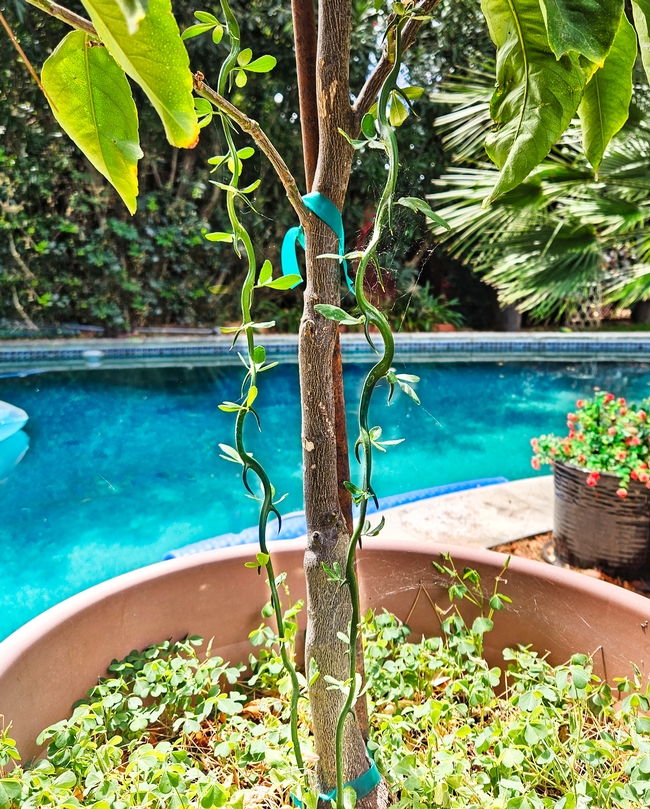I have a potted Meyer lemon tree (Citrus Meyer) that I have regrettably neglected these past few months. I recently took some time to give it some tender loving care and was relieved to discover that my tree was doing well and even sprouted some new growth. On closer examination, I noticed that the newly discovered shoots looked quite different from the rest of the lemon tree. The main lemon tree has medium-sized, oblong-shaped leaves, whereas the new growth has small, three-lobed, narrow leaves.
So, I had to ask myself - should I keep this new growth? And the answer turned out to be a gigantic NO! I learned that the new growth must be removed in order to keep the integrity of the current tree, because the new growth could possibly take over the original tree and likely not produce decent fruit. The reason it is unlikely to produce good-quality fruit is that it is a “graft rootstock sprout”, a product of citrus tree grafting.
The grafting process is a technique used to grow the best possible fruit tree by joining parts from two or more plants to create one new hardy plant or tree. Grafting is accomplished by binding a scion (upper part of plant) selected for its desirable fruit, with a root stock (bottom part of plant) selected for its strong root system.
With my Meyer lemon tree, I discovered that often times the graft rootstock is taken from a completely different type of citrus tree, called Trifoliate orange. Trifoliate orange is a preferred rootstock because it is cold and drought tolerant, and very strong and hardy. But you wouldn't want the full tree, as it is known to produce very sour fruit that can be rather inedible unless cooked.
I thanked the Trifoliate orange portion of tree graft for providing the lemon tree with such a strong root system, and then using a disinfected pair of clippers, I carefully removed the graft rootstock sprouts. I made sure to cut close to the main tree but leave enough room for the wound to heal. The Meyer lemon tree is feeling loved again.
Attached Images:

